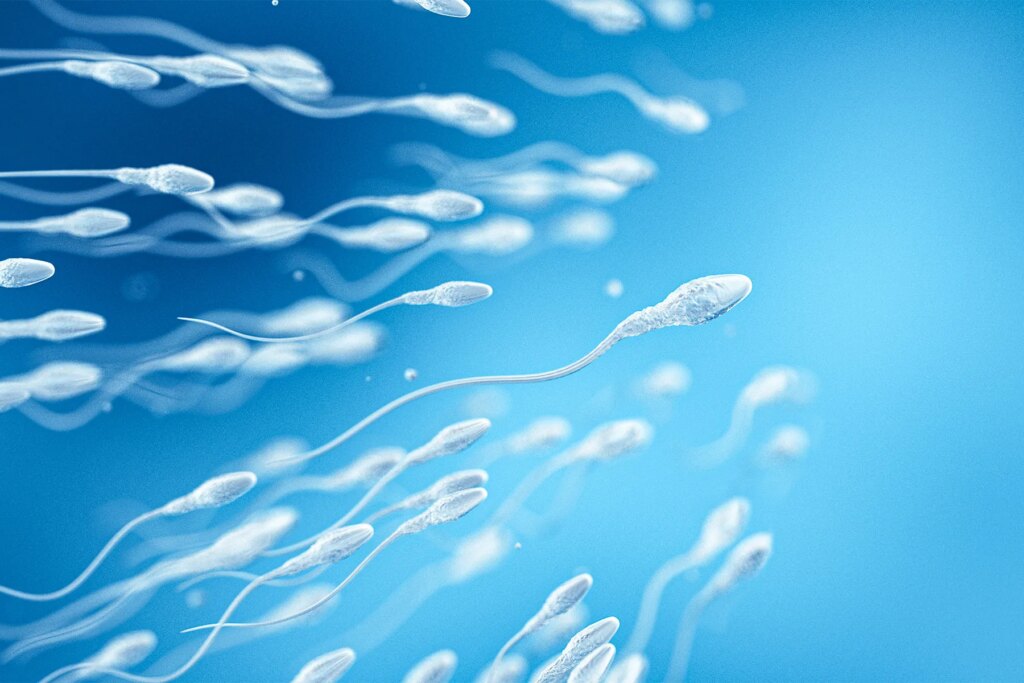In 2018, Michael B. Greene, PhD, received a letter that took his breath away. A woman who might be his biological daughter was looking to connect.
He knew it was possible. In the 1970s, he donated sperm many times to make some extra cash as a graduate student in New York City. At the time, he’d signed an anonymity contract. “Every once in a while, later on, I would think maybe I’d bump into somebody on the streets of New York who looked like me,” says Greene, a developmental psychologist in Montclair, NJ. “That was the extent of my thought.”
For decades, nothing happened. In the early 2000s, at-home DNA tests became available. Greene’s second cousin had shared his own DNA results on the website of the testing company. Meanwhile, a woman conceived through Greene’s donated sperm had hired a genealogist to try to find her biological father. The genealogist saw Greene’s cousin’s DNA results and contacted him to ask if anybody in the family had lived in New York in their 20s or 30s, back in the 1970s.The cousin gave them Greene’s name. Greene was delighted to be found and agreed to paternity testing, which confirmed the relationship.
Soon after, Greene met with the young woman and her sister, who was also conceived with Greene’s donated sperm. They talked for hours. He’s since met 13 of his other biological children and even hosted a party that 10 of them attended. He smiles at the memory of them all playing a game of trivia that revealed shared traits, like stubbornness, introversion, and a love of peanut butter and jelly sandwiches. “It was just a really wonderful time,” he says. “It was great meeting all of them.”
As technology makes these kinds of discoveries inevitable, legal systems are finding ways to evolve with the times. In 2022, Colorado became the first state to ban anonymous sperm and egg donations. The law will take effect in 2025. It requires sperm and egg banks to disclose information about donors’ identities upon request when a donor-conceived person turns 18. That’s in line with laws that have passed in countries including the United Kingdom, Austria, Germany, Switzerland, the Netherlands, Norway, Sweden, and New Zealand. The changes to anonymity policies are for a child conceived through donated sperm to locate the sperm donor, not for the sperm donor to look for children conceived from their sperm donation.
Sperm banks, too, are adapting. In the past, anonymity contracts were part of the culture. Today, some clinics still label donations as anonymous, even if that’s not realistic. “Donors cannot be promised anonymity at this point,” says Sean Tipton, spokesperson for the American Society of Reproductive Medicine. “The banks can say, ‘We won’t disclose.’ But that doesn’t mean that people aren’t going to find [the donor].”
Seattle Sperm Bank, which opened in 2008, has always had an “open identity” policy, which means donors commit to at least one contact with the child when they turn 18 if the child requests it. “Our donors know they will be contacted,” says Angelo Allard, Seattle Sperm Bank’s general supervisor. “Will they be contacted by every offspring? Probably not.” But Allard sees “almost certainty” that at least one child would reach out.
Allard says that the increased availability of genetic testing prompted Seattle Sperm Bank to counsel donors — who earn up to $100 per usable sample — more intensively about the open ID policy. They also discuss the probability that a sperm donor may be contacted before a child’s 18th birthday, regardless of their contract, due to the availability of tools like DNA tests, reverse image searches, social media, and internet sleuthing. He says that these sessions prompt a small number of would-be donors to decide not to donate. Still, the number of new donors at the Seattle Sperm Bank rose 22% when comparing the years of 2017-2020 and 2020-2023.
California Cryobank, based in Los Angeles, takes a similar approach: Its sperm donors must agree to allow the organization to release their identifying information (such as their name, email, or last known address) to any offspring who request the information upon turning 18. “It’s been years since we accepted anonymous donors,” says Mike Large, who oversees donor services for the company. “I think anonymity or being anonymous comes with almost an implicit guarantee. And we can’t make those claims to our donors as well as our recipients and the donor-conceived people.”
A “significant” number of would-be donors change their mind when they learn about the ID disclosure policy, Large says. But he believes that attitudes around sperm donation are evolving and enough donors will make up for those who decide not to donate. “Money is a piece of it,” he says, “but they’re really altruistic.”
For many people, there is still a stigma tied to sperm donation, as well as with infertility and insemination. That can lead to secrecy and shame, which can then be passed on to the child, who may not even learn that they were donor conceived until later in life.
Wendy Kramer is working to change that. Her son, Ryan, was conceived with donor sperm and born in 1990. She was honest with him about his conception from an early age. When Ryan was about 6 years old, he asked to meet his biological father. The sperm bank wouldn’t share any information. So around 2000, Kramer started to connect with other people like her and Ryan to create The Donor Sibling Registry, a nonprofit organization that has enabled more than 25,000 half-siblings and/or their donors to meet to date (including many of Greene’s donor-conceived children).
In 2005, Kramer’s son took a DNA test, which led mother and son to seek out and build a relationship with his biological father. To date, Wendy and Ryan Kramer have also identified 28 half-brothers and sisters. Kramer says that many of those siblings weren’t told by their parents that they were donor-conceived and were caught off-guard when they learned the truth through genetic testing. “You get families that are imploding. Kids who are struggling. Trauma,” she says. “Some of [Ryan’s] half-siblings thought it was a prank. They deleted the emails from the half-siblings saying, ‘Someone’s pranking people in 23andMe. My parents didn’t use a donor.’”
Kramer recommends that donor parents tell their kids the truth before the child can even speak, and that sperm banks should enable connections at any age. Just as openness has risen around adoption, she’d like to see that happen with donor conception. “Then it’s just a part of their story to be proud of,” she says.
In the past, when sperm donations were anonymous, the rights of the donor and the recipient were top of mind. Today, as donor-conceived children grow up in the internet era, they want to be heard. They’ve started nonprofits like the U.S. Donor Conceived Council and online communities such as We Are Donor Conceived to connect, raise awareness, and advocate for their rights.
Every sperm donor will have different expectations of privacy and what it means today — and not all are going to be open to being contacted by children conceived from their donated sperm, especially if they did so under promises of anonymity. But some, like Greene, embrace the opportunity to build relationships with the people who got their start from his sperm donation decades ago. He encourages other sperm donors to at least be open to connecting with their donor-conceived offspring if the child reaches out. He maintains varying levels of closeness with each of the children he’s met, depending on what each individual wants.
“I think that donors should not be forceful about wanting to be in the kid’s life, but just be open to meeting them and be as supportive as possible to the kids,” Greene says. “It’s so enriched my life. I can’t imagine my life without these kids.”







